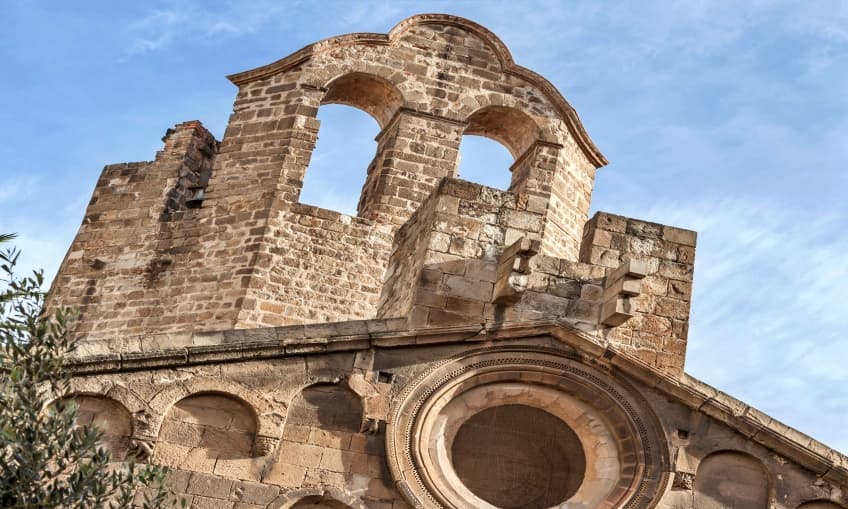
Monastery of Sant Pau del Camp (Barcelona)
In the El Raval neighbourhood is the Benedictine Monastery of Sant Pau del Camp. There is no proven data on its origin, but it is presumed that its foundation dates from the nineth century. It is currently considered one of the best-preserved Romanesque buildings in existence.
The architectural design of the temple is characteristically Romanesque, with a single nave containing a plan in the shape of a Greek cross. It is home to a dome with a transept, three apses and an interior covered with barrel vaults. The cover is guarded by two columns with a finish of Visigothic capitals made of marble. On the tympanum is a representation of Jesus escorted by the apostles Saint Peter and Saint Paul, with an inscription inviting visitors to enter.
The cloister of the monastery is small and was built in the 13th century. Currently, it has a single entrance, which has multi-lobed arches. These arches are supported on germinated columns with beautifully decorated capitals topped with Biblical motifs, hunting scenes, warriors, mermaids, animals, monsters and plant motifs.
Around the monastery is a large garden with an ancient abbey house, whose construction took place during the 13th and 14th centuries and was completed in the 18th century.
In the chapter house of the monastery, which dates from the 14th century, the tombstone of Count Wilfredo II of Barcelona is located. He is presumed to be the founder of the order and his wish was to be buried in the monastery. This took place in the year 911.
The architectural design of the temple is characteristically Romanesque, with a single nave containing a plan in the shape of a Greek cross. It is home to a dome with a transept, three apses and an interior covered with barrel vaults. The cover is guarded by two columns with a finish of Visigothic capitals made of marble. On the tympanum is a representation of Jesus escorted by the apostles Saint Peter and Saint Paul, with an inscription inviting visitors to enter.
The cloister of the monastery is small and was built in the 13th century. Currently, it has a single entrance, which has multi-lobed arches. These arches are supported on germinated columns with beautifully decorated capitals topped with Biblical motifs, hunting scenes, warriors, mermaids, animals, monsters and plant motifs.
Around the monastery is a large garden with an ancient abbey house, whose construction took place during the 13th and 14th centuries and was completed in the 18th century.
In the chapter house of the monastery, which dates from the 14th century, the tombstone of Count Wilfredo II of Barcelona is located. He is presumed to be the founder of the order and his wish was to be buried in the monastery. This took place in the year 911.
Location
Religious Buildings in Barcelona
Civil Buildings in Barcelona
Museums in Barcelona









